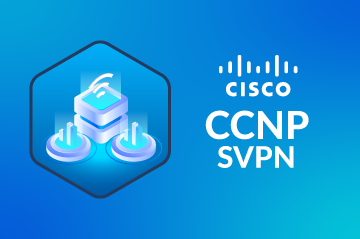Parents exploring early childhood education options often consider pre-kindergarten homeschool programs as a flexible way to introduce their children to structured learning. While homeschooling allows individualized attention, combining it with hands-on activities can dramatically enhance cognitive, social, and motor skill development. This approach ensures children not only learn foundational skills but also engage actively, fostering curiosity and confidence.
Understanding Pre-Kindergarten Homeschool Programs
Pre-K homeschool programs are designed for children ages 3–5. They typically include structured lessons in literacy, numeracy, creativity, and social-emotional skills, delivered in a parent-led or guided environment. The main advantage of homeschooling is the ability to tailor learning to a child’s pace, strengths, and interests.
However, homeschool programs alone may lack sufficient peer interaction or practical, experiential learning. Integrating hands-on activities ensures children receive a balanced, engaging early education that prepares them for future academic and social settings, including transitions into a rising kindergarten program in alpharetta.
The Importance of Hands-On Learning
Cognitive Development
Hands-on activities enhance memory, problem-solving, and critical thinking. Children explore cause and effect, patterns, and basic STEM concepts through interactive play.
Social and Emotional Growth
Group or family-based activities encourage sharing, cooperation, and emotional regulation. Children build confidence and independence as they try new tasks and learn from their successes and mistakes.
Physical Development
Fine motor skills develop through crafting, building, and sensory exploration, while gross motor skills improve through outdoor play and movement-based activities.
Blending Structured Curriculum with Hands-On Activities
Daily Schedule Planning
A balanced day combines focused academic lessons with interactive hands-on activities. Short learning segments, followed by practical projects or play, keep children engaged and support retention.
Integrating Learning Into Play
Educational toys, manipulatives, and games can reinforce reading, math, and science concepts. Everyday household items can be repurposed for creative problem-solving exercises.
Theme-Based Learning
Organize units around topics like “Seasons,” “Animals,” or “Community Helpers,” and pair them with crafts, sensory bins, or nature walks. This approach keeps learning relevant, tangible, and fun.
Examples of Hands-On Activities
Art and Craft Projects
Drawing, painting, and collage-making enhance creativity and fine motor skills.
Science Experiments
Simple experiments, like planting seeds or mixing colors, promote observation, prediction, and critical thinking.
Sensory Play
Activities using sand, water, rice, or textured materials improve focus and problem-solving abilities.
Cooking and Life Skills
Measuring ingredients or preparing simple snacks teaches math, independence, and coordination.
Outdoor Activities
Nature walks, obstacle courses, or playground games develop gross motor skills, confidence, and social interaction.
Customizing Activities to Your Child’s Learning Style
Visual Learners
Incorporate charts, color-coded materials, and drawing-based projects.
Auditory Learners
Include songs, rhymes, and verbal instructions in activities.
Kinesthetic Learners
Focus on movement, building, and tactile exploration. Manipulatives, puzzles, and hands-on experiments keep these children engaged.
Balancing Individual and Group Experiences
Solo Learning
Encourages creativity, focus, and independence.
Group Interaction
Organize small homeschool co-ops, playdates, or community activities. This fosters teamwork, social skills, and sharing.
Family Involvement
Older siblings or parents can participate in projects, promoting cooperative learning and problem-solving within the household.
Using Everyday Life as Learning Opportunities
Household Tasks
Sorting laundry, cooking, and organizing toys can be transformed into counting, measuring, and sequencing lessons.
Community Exploration
Field trips to parks, libraries, or local farms provide hands-on experiences in real-world contexts.
Technology
Educational apps or online resources can supplement hands-on learning, but should remain limited to maintain balance with tactile activities.
Tracking Progress and Maintaining Engagement
Observation and Documentation
Keep a portfolio of completed projects and milestones to assess development and guide future lessons.
Reflection and Discussion
Ask questions like, “What did you notice?” or “What would you try next?” to encourage critical thinking.
Celebrating Achievements
Display artwork, experiments, or certificates to boost confidence and motivation.
Preparing for Kindergarten Readiness
Hands-on learning in homeschool programs helps children develop academic, social, and emotional readiness for school. Practical skills, structured routines, and cooperative play prepare children for the transition.
Supplemental programs, such as a day care center in Alpharetta or a summer camp program in Alpharetta, can provide additional socialization, peer learning, and exposure to group-based activities. These experiences ensure children are confident, well-rounded, and ready for a classroom environment.
Conclusion
Blending pre-Kindergarten homeschool programs with hands-on learning activities creates a holistic, engaging, and effective educational experience. Cognitive, social, and physical skills are reinforced through interactive, practical play, while personalized instruction ensures children thrive at their own pace. By supplementing homeschool lessons with community programs, field trips, and group activities, parents can provide a balanced, enriching early childhood experience that prepares their children for future academic success and personal growth.



